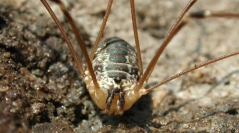

 European Journal of Taxonomy
2016 (216) - Pages 1-35 (EJT-216)
European Journal of Taxonomy
2016 (216) - Pages 1-35 (EJT-216)Within the central European opilionid fauna the widely used species names Leiobunum rupestre Herbst, 1799 and Leiobunum tisciae Avram, 1968 pose taxonomic and distributional problems. In addition, Nelima apenninica Martens, 1969 is close to L. tisciae in terms of external and genital morphology, but is specifically distinct. While coxal denticulation is largely lacking in N. apenninica, the validity of the genus Nelima Roewer, 1910 is questioned again. In addition, Leiobunum subalpinum Komposch, 1998, a recently described novelty from the eastern Alps, is closely related to L. rupestre. The four species are combined as the morphologically defined Leiobunum rupestre species group. Except for L. subalpinum, they were found to be allopatrically distributed from the Carpathians across central and Northwest Europe to the south-western Alps. The latter species is locally sympatric and partly elevationally parapatric to L. rupestre. Leiobunum tisciae is a recently introduced name and here recognized as a junior synonym of a number of taxa described much earlier, of which L. gracile Thorell, 1876 is re-introduced as oldest available name. Detailed morphological and distributional data for all taxa are presented.
Taxonomy, synonymy, Leiobunum, Nelima, Europe.